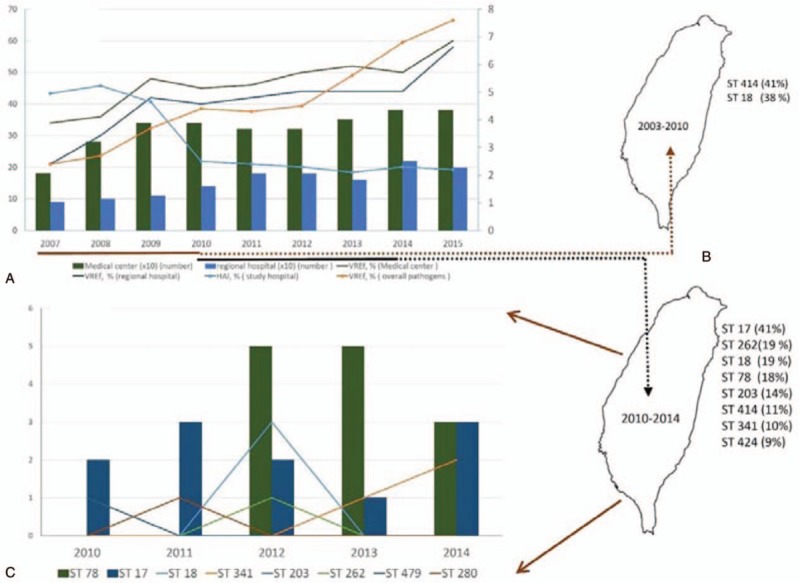Figure 2.

Nine-year trend of the rate of vancomycin-resistant Enterococcus faecium isolates. (A) A rapid increase in vancomycin resistance from 12.4% in 2007 to 39.9% in 2015 among enterococcal isolates was reported in Taiwan Nosocomial Infection Surveillance System (TNIS), and an increase of Enterococcus faecium from 2.4% in 2007 to 8.6% in 2015 among Enterococcal isolates was noted in TNIS (data from Taiwan Centers for Disease Control). (B) Before 2010, ST-414 and ST-18 of vancomycin-resistant Enterococcus faecium isolates were the 2 predominant STs, accounting for 79.6% of the isolates (data from Appendix 1). (C) ST-17 (41.7%) and ST-78 (18.0%) vancomycin-resistant Enterococcus faecium isolates were the predominant STs during the study period (data from this study). HAI = healthcare-associated infection, TNIS = Taiwan Nosocomial Infection Surveillance System, VREfae = vancomycin-resistant Enterococcus faecium.
